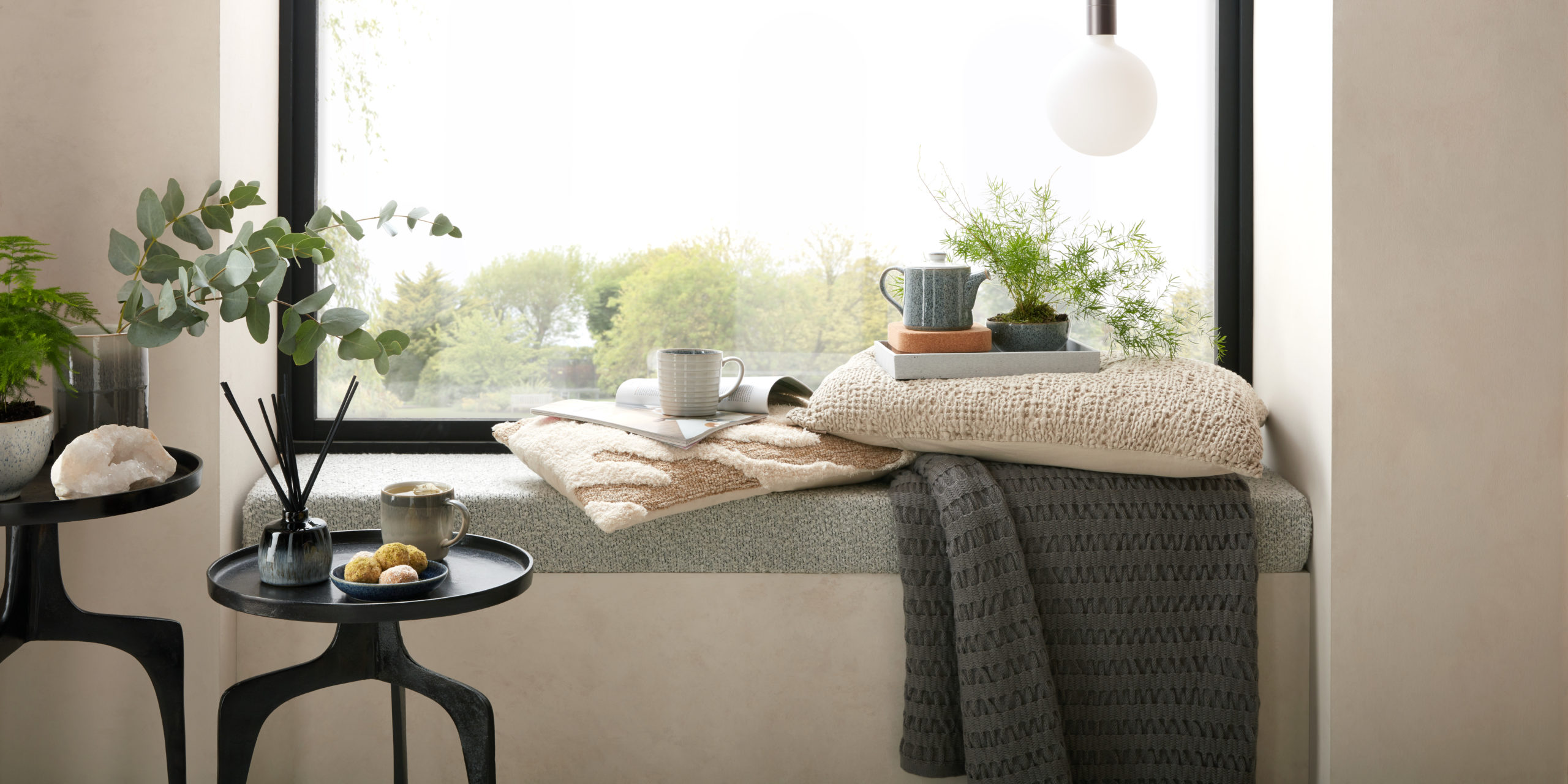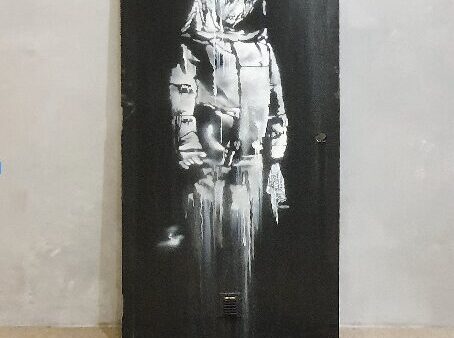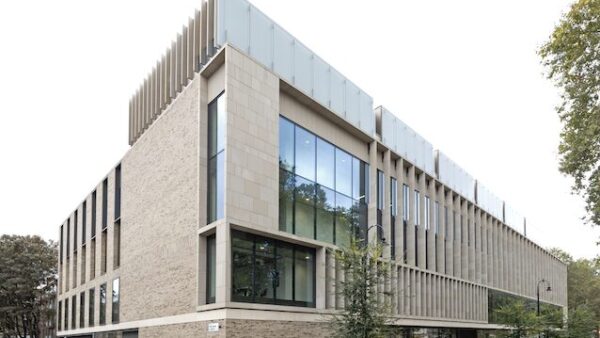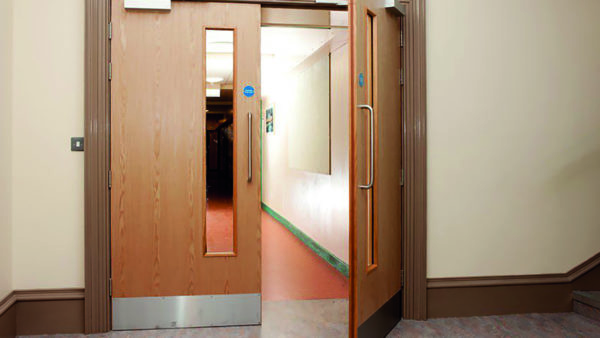
Richard Eaton says the emphasis on interiors increased during lockdowns with so many of us staying home and the emphasis is still on looks that make us feel cosy, happy and safe.
Japandi
Going into 2022, the Japandi look is going to play a key role in interior design. This trend combines the minimalism and functionality of both Scandinavian and Japanese aesthetics, to create the perfect harmony of nature, function, and simplicity. Expect to see a warm yet minimalistic colour scheme, with organic hues such as cream, stone grey, and forest green taking the lead.
In both Scandi and Japanese cultures, there’s a great appreciation of handcrafted furniture and accessories, and it’s this focus on quality and craftmanship that will be a major driving force behind the Japandi trend. We’ll see a bigger emphasis on handcrafted pieces made to last, rather than cheaply made, disposable homewares designed for fleeting trends. More people will want to know the story behind their pieces and the hard work and love that has gone into them.
Designed to last, Japandi-style interiors will also have a key focus on sustainability and timelessness, so look for high-quality homewares that are made to be reused. We’ll see a more careful consideration of materials, with natural substances such as wood, clay, and wool coming to the forefront, as well as furniture and accessories designed with clean lines and shapes that can be restyled for years to come.
Sustainability and balance
Sustainability has been on our radar for a few years now, and next year we can expect to see it make an even bigger appearance. As a matter of fact, 82% of shoppers have said that sustainability is a bigger focus for them now than it was before the pandemic.
We’ll see a greater emphasis on reusing and upscaling homewares going into the new year. For those looking to update their interior design while still being sustainable, finding ways to rematch old pieces will be key. This includes mixing and matching tableware pieces and coordinating furniture from different styles and periods. Thrifting and upcycling will be a major part of this and is a big reason why we’re seeing a retro revival, with vintage 70s pieces finding their way back into our homes.
Having said that, it’s human nature to crave newness, and while buying new may not fit in with traditional views on sustainability, this trend isn’t just about making use of what we already have, but rather shopping with a conscience. This means choosing pieces that are designed to last and are made with the planet in mind. We’ll see more people reflecting over their purchases, whether that’s by only choosing pieces they need and love, or by investing in durable pieces that are made within the UK and have a low carbon footprint.
Mainstream maximalism
While minimalism has been all over social media and interiors magazines in recent years, expect to see maximalism make a comeback in 2022. We’ll be straying away from the traditional matching interiors of the previous decade, and instead focusing on honest interiors that tell our own story. It’s something we’ve seen make an appearance in 2021 with the rise of cluttercore and cottagecore, and it’s set to remain as we choose interiors that reflect our lifestyle and personality, rather than pieces that adhere to a cohesive trend.
The updated maximalism trend will bring together furniture and accessories that have multiple origins and histories to create the perfect blend of the past and modernity. Again, 1970s style is set to enjoy a revival next year, with bold prints and upcycled furniture sitting alongside modern pieces.
To get the mainstream maximalism trend at home, disregard a consistent style and instead choose pieces that you love and that bring you joy. Display them front and centre to create a home that reflects who you are as a person, as well as how you use the space. Buying only pieces that speak to you is a sure-fire way to ensure your interiors are here to stay for years to come. Statement gallery walls and open shelving will create a layered look and provide you with the perfect place to show off your treasured memories.
Future-proof spaces
So far in the 2020s we have adopted trends that are not only for this decade but are here to stay for the next, and as we focus more on sustainability and joyful spaces, future-proof interiors have become more important than ever. The home is now the hub of all aspects of life, from work to entertaining and relaxation, and now that we’ve had time to acclimatise to this new way of living, we have a better understanding of how we can make our homes work for us.
2022 will see the fall of open plan living and the rise of broken plan. Using shelving, screens, and large pieces of furniture as partitions, we’ll be better defining the spaces between living and working. Broken plan is all about creating an environment designed to do a multitude of jobs, while giving us that extra privacy to do each one without disruption.
Flexible living also extends to furniture and homewares, so expect to see versatile pieces that mix comfort with function and style. Whether it’s fold up desks that tuck away into a corner each evening, or furniture that doubles up as storage, it’s all about making the most of every inch of space to make your home work for you.
Going into 2022, there’ll be less of a focus on trends in the traditional sense, with people opting for interiors that fit around their lifestyle. Sustainability has been a major driving force behind this shift, and whether it’s Japandi, maximalism, or future-proof spaces, choosing pieces carefully will be key. We’ll take more time to reflect on how each piece fits within our design narrative, as well as the impact it will have on the planet. One thing’s for sure, our homes will become a sanctuary of joy and safety, and a collection of things we love.”








